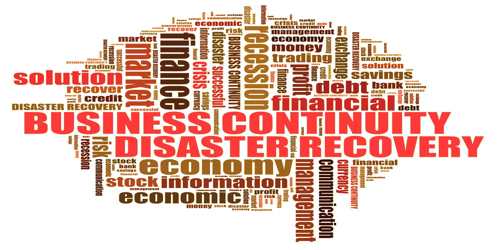Business Continuity (BC) –
According to the International Standards Organization (ISO), the concept of business continuity arose when governments and regulators recognized the need to mitigate the effects that disruptive events such as a cyber attack have on society, with businesses recognizing their interdependence.
Industry-specific regulators including the Federal Deposit Insurance Corporation and the Payment Card Security Standards Council also incorporate business continuity as part of their compliance management programs. All include a requirement to create a business continuity plan (BCP) as part of business continuity management (BCM).
A business continuity plan should contain –
- Preventive measures- These are systems put in place to prevent the occurrence of disruptive events
- Mitigation measures- These are measures put in place to limit the negative impact of business disruptions
- Recovery measures- These are measures to ensure the restoration of normal business operations as fast as possible hence avoiding adverse effects
Businesses, however, have different needs and structures. Business continuity plans (BCP) will, therefore, differ in different organizations. BCPs typically focus on network connections, online systems, phone lines, network drives, servers, and business applications. Effective plans will be able to get systems back up and running promptly and with as little damage to the organization’s productivity as possible.
Disaster Recovery –
Disaster recovery is the process of resolving the disruption. At its most basic level, it involves identifying the source of the incident and finding a way to fix it. However, the plans are usually very technical and focus on specific deadlines that must be met to prevent catastrophic damage.
It will include things such as RTOs (recovery time objectives), which are estimates of how long it will take for a product, service, or activity to become available following an incident. Organizations must be able to get back up and running within this time, or else the levels of disruption will escalate.
Key difference between business continuity and disaster recovery –
The key difference is when the plan takes effect. For example, business continuity requires us to keep operations functional during the event and immediately after. Disaster recovery focuses on how we respond after the event has completed and how we return to normal.
Business continuity refers to the tactical and strategic capability of organizations and businesses to respond to disruptions that may occur in the course of business operations. On the other hand, disaster recovery refers to the process, procedures, and policies involved in the preparation for the continuation and recovery of technology systems, applications, and infrastructure which an organization needs to operate after an outage or disaster.
While business continuity focuses on all aspects of the business including employees, consumers, communication strategies, third party contacts and technology, disaster recovery focuses on technology or information systems including involves ensuring data is stored and backed up such that employees can access any plans, servers, mail, files, and presentations when working from an off-site location.
Examples of risks considered in a business continuity plan include employees, consumers, communication strategies, third party contacts, natural disasters, and technology. On the other hand, examples of risks considered in a disaster recovery plan include the disruption of technology systems, applications, and infrastructure.
Business continuity refers to the tactical and strategic capability of organizations and businesses to respond to disruptions that may occur in the course of business operations. It focuses on all aspects of the business including employees, consumers, communication strategies, third party contacts, and technology.
On the other hand, disaster recovery refers to the process, procedures and policies involved in the preparation for the continuation and recovery of technology systems, applications, and infrastructure which an organization needs to operate after an outage or disaster. focuses on technology or information systems including involves ensuring data is stored and backed up such that employees can access any plans, servers, mail, files, and presentations when working from an off-site location.
For example, if a hurricane destroys our office building, our business recovery solution may be to allow employees to work remotely. However, this solution only works as part of emergency response and is not sustainable long term. Our disaster recovery solution focuses on ways to get employees back in a single location and how to replace equipment.
Despite the differences, business continuity cannot be effective without disaster recovery. Businesses should, therefore, employ both strategies for smooth business operations and a faster recovery in case of a disruption.
Information Sources:
















